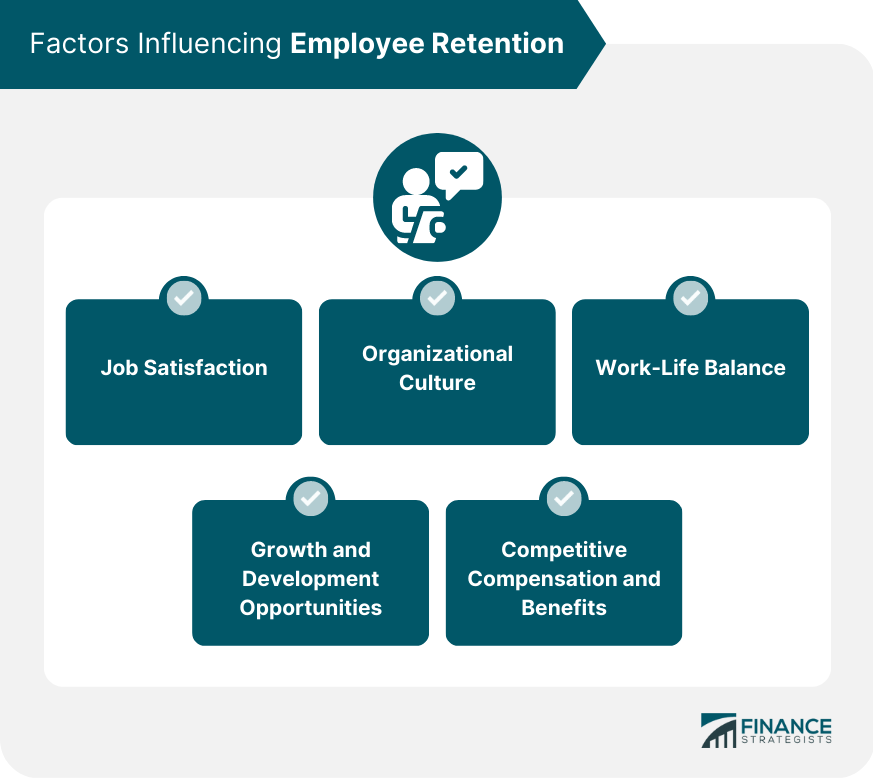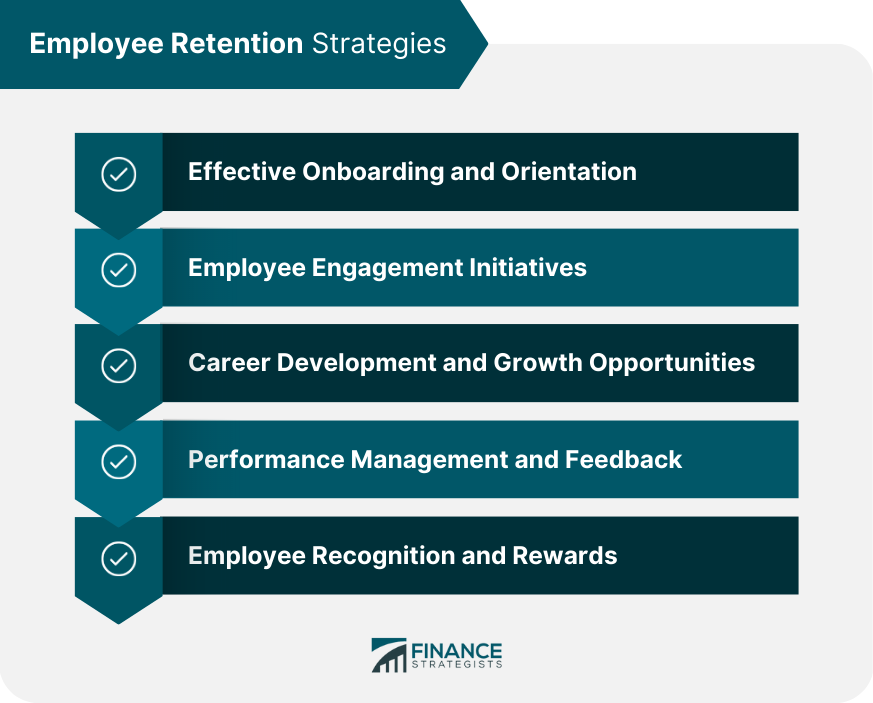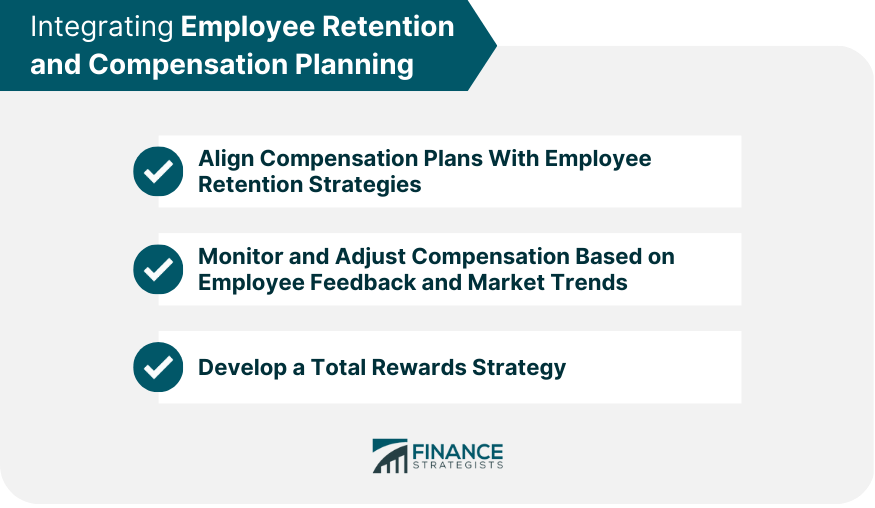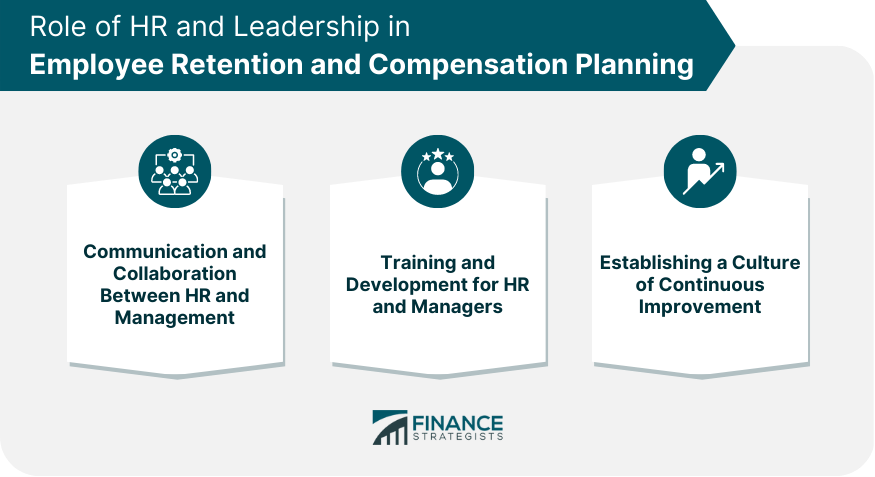Employee retention refers to the efforts made by an organization to keep its employees from leaving the company. This includes strategies and policies that aim to increase employee engagement, job satisfaction, and loyalty to the company. The goal of employee retention is to reduce turnover, which can be costly to a company in terms of time, money, and loss of institutional knowledge. Compensation planning, on the other hand, refers to the process of developing a strategy to reward employees for their work. This includes determining the appropriate salary, benefits, and other forms of compensation that will be offered to employees. Compensation planning is an important aspect of employee retention because it can be a major factor in an employee's decision to stay with or leave a company. Together, employee retention and compensation planning can help organizations attract and retain talented employees, increase job satisfaction and engagement, and create a positive work environment. This can lead to increased productivity, improved employee morale, and ultimately, greater success for the organization. Job satisfaction is a key driver of employee retention. Employees who are satisfied with their work environment, job duties, and career growth opportunities are more likely to stay with an organization. A positive organizational culture fosters loyalty and commitment among employees. A strong culture emphasizes open communication, teamwork, and a sense of belonging, which can significantly impact employee retention rates. Providing employees with opportunities for growth and development contributes to their overall job satisfaction and engagement. Offering training, mentorship, and advancement opportunities can help retain top talent. Supporting work-life balance is essential for employee retention. Flexible work arrangements, remote work options, and generous time-off policies can help employees maintain a healthy work-life balance, leading to higher retention rates. A competitive compensation and benefits package can attract and retain top talent. Ensuring that your organization's compensation is in line with industry standards and adjusting for regional cost-of-living differences can help maintain employee satisfaction and retention. Base salary is the fixed income an employee receives for their work. It is typically determined by factors such as job role, experience, and market value. Bonuses and incentives are additional compensation offered to employees based on performance, company profits, or other predetermined criteria. Benefits and perks encompass non-monetary rewards, such as health insurance, retirement plans, and paid time off. These offerings can significantly impact employee satisfaction and retention. Equity and stock options provide employees with ownership opportunities in the organization. These can be a powerful retention tool, as they align the employee's interests with the company's long-term success. The market-based approach involves setting compensation levels based on industry and regional benchmarks. This approach ensures that an organization's compensation remains competitive within the market. The job evaluation approach involves assessing the value of each job within an organization based on factors such as skill level, responsibility, and complexity. This method helps establish internal pay equity and consistency. The pay-for-performance approach ties compensation to employee performance, incentivizing high performance and aligning employee goals with organizational objectives. Promoting pay equity and transparency within an organization can help minimize potential pay discrepancies and foster a sense of fairness among employees. A well-designed onboarding and orientation program can help new employees feel welcomed and supported, setting the foundation for long-term retention. Engaged employees are more likely to stay with an organization. Implementing initiatives such as team-building events, open forums, and regular communication can help foster employee engagement. Offering training, mentorship, and advancement opportunities can help employees see a future within the organization, encouraging long-term commitment. Regular performance evaluations and constructive feedback can help employees feel valued and motivated, contributing to higher retention rates. Recognizing and rewarding employees for their hard work and achievements can boost morale and encourage loyalty. Aligning compensation plans with employee retention strategies involves evaluating the effectiveness of current compensation packages and adjusting them based on employee feedback and market trends. Developing a total rewards strategy that encompasses both monetary and non-monetary benefits can help improve overall employee satisfaction and retention. Organizations should ensure that their compensation plans support and reinforce their employee retention strategies. This may involve offering competitive salaries, performance-based incentives, and comprehensive benefits packages. Regularly reviewing and updating compensation plans in response to employee feedback and market trends can help organizations remain competitive and retain top talent. A total rewards strategy integrates various components of an organization's compensation plan, including base salary, bonuses, benefits, and non-monetary rewards, to create a comprehensive and appealing package for employees. Effective communication and collaboration between HR and management are crucial in implementing successful employee retention and compensation planning initiatives. Regular discussions and updates can ensure that both parties are aligned and working toward common goals. Providing HR and managers with the necessary training and development opportunities can help them better understand and implement employee retention and compensation planning strategies. Creating a culture of continuous improvement within an organization can help ensure that employee retention and compensation planning efforts are regularly reviewed, adjusted, and improved upon. KPIs can help organizations track and measure the success of their employee retention and compensation planning efforts. Examples of relevant KPIs include employee turnover rates, average tenure, and engagement scores. Analyzing employee turnover rates and understanding the reasons behind employee departures can provide valuable insights into the effectiveness of an organization's retention and compensation strategies. Regularly conducting employee satisfaction and engagement surveys can help organizations gather feedback and identify areas for improvement in their retention and compensation planning efforts. Organizations must ensure that their compensation planning and retention efforts comply with equal pay and anti-discrimination laws to avoid potential legal issues and maintain a fair and equitable workplace. Protecting employee data and maintaining confidentiality are crucial when implementing retention and compensation planning initiatives. Organizations should strive to maintain fairness and consistency in their compensation planning and retention efforts to foster a sense of trust and equity among employees. Employee retention and compensation planning are critical components of any organization's human resources strategy. Retaining talented employees can help reduce turnover costs, increase productivity, and create a positive work environment. Factors such as job satisfaction, organizational culture, growth opportunities, work-life balance, and competitive compensation packages all play a role in employee retention. Developing a total rewards strategy that encompasses both monetary and non-monetary benefits can further improve employee satisfaction and retention. Effective communication and collaboration between HR and management, training and development, and a culture of continuous improvement are key to the successful implementation of retention and compensation planning. Measuring effectiveness through KPIs, analyzing employee turnover rates, conducting satisfaction surveys, and ensuring compliance with legal and ethical considerations can further enhance retention and compensation planning efforts.Employee Retention and Compensation Planning: Overview
Factors Influencing Employee Retention
Job Satisfaction
Organizational Culture
Growth and Development Opportunities
Work-Life Balance
Competitive Compensation and Benefits

Compensation Planning
Components of Compensation
Base Salary
Bonuses and Incentives
Benefits and Perks
Equity and Stock Options
Compensation Strategies
Market-Based Approach
Job Evaluation Approach
Pay-For-Performance Approach
Pay Equity and Transparency
Employee Retention Strategies
Effective Onboarding and Orientation
Employee Engagement Initiatives
Career Development and Growth Opportunities
Performance Management and Feedback
Employee Recognition and Rewards

Integrating Employee Retention and Compensation Planning
Aligning Compensation Plans With Employee Retention Strategies
Monitoring and Adjusting Compensation Based on Employee Feedback and Market Trends
Developing a Total Rewards Strategy

Role of HR and Leadership in Employee Retention and Compensation Planning
Communication and Collaboration Between HR and Management
Training and Development for HR and Managers
Establishing a Culture of Continuous Improvement

Measuring the Effectiveness of Employee Retention and Compensation Planning
Key Performance Indicators (KPIs)
Employee Turnover Rates and Reasons for Departure
Employee Satisfaction and Engagement Surveys
Legal and Ethical Considerations
Equal Pay and Anti-Discrimination Laws
Data Privacy and Confidentiality
Ensuring Fairness and Consistency in Compensation Planning and Retention Efforts
Conclusion
Employee Retention and Compensation Planning FAQs
The key factors influencing employee retention include job satisfaction, organizational culture, growth and development opportunities, work-life balance, and competitive compensation and benefits.
A comprehensive compensation plan includes base salary, bonuses and incentives, benefits and perks, and equity and stock options.
Organizations can align their compensation plans with employee retention strategies by offering competitive salaries, performance-based incentives, comprehensive benefits packages, and developing a total rewards strategy that encompasses both monetary and non-monetary benefits.
HR and leadership play a crucial role in employee retention and compensation planning by ensuring effective communication and collaboration between departments, providing necessary training and development opportunities, and fostering a culture of continuous improvement within the organization.
Organizations can measure the effectiveness of their employee retention and compensation planning efforts by tracking key performance indicators (KPIs), analyzing employee turnover rates and reasons for departure, and conducting employee satisfaction and engagement surveys.
True Tamplin is a published author, public speaker, CEO of UpDigital, and founder of Finance Strategists.
True is a Certified Educator in Personal Finance (CEPF®), author of The Handy Financial Ratios Guide, a member of the Society for Advancing Business Editing and Writing, contributes to his financial education site, Finance Strategists, and has spoken to various financial communities such as the CFA Institute, as well as university students like his Alma mater, Biola University, where he received a bachelor of science in business and data analytics.
To learn more about True, visit his personal website or view his author profiles on Amazon, Nasdaq and Forbes.











